Author: Filippo Pozzi Source: medium Translation: Shan Ouba, Golden Finance
Before the "Dencun" update, Layer 2 had already played an important role in the ecosystem. However, after the introduction of this famous update, Layer 2's explosion reached a level that was previously unimaginable, making it an indispensable element for scaling and improving the efficiency of the entire ecosystem. Today, we will focus on analyzing the actual effect of the update about four months after its official release. This time period allows us to review a large amount of data and evaluate the actual success or failure of the update.
What is Dencun?
Ethereum's "Dencun" update was released on March 13, 2024, combining the "Cancun" proposal for the Execution Layer and the "Deneb" proposal for the Consensus Layer. The update introduced a series of Ethereum Improvement Proposals (EIPs) aimed at improving different aspects of the Ethereum network. Among them, EIP-4844, also known as Proto-Danksharding, is particularly important for the scalability of Layer 2 because it creates Blobs, which increase the possibility of managing data within the network. So how does it do it?
Without going into technical details, we can think of "blobs" as data packets (256 KB) that represent a series of transactions that occurred on Layer 2. These data packets are then packaged and sent to the Ethereum network for verification. I show you a graphical example via txcity.io.
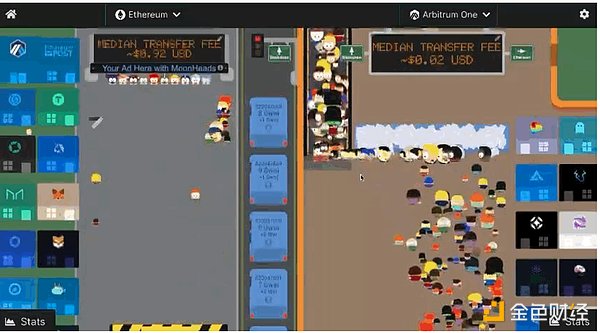
Here we see a representation of two blockchains: Ethereum on the left and Arbitrum (Dencun’s newer network) on the right, with each person representing a transaction.
Let’s focus on the right, the Arbitrum blockchain, which represents one of Ethereum’s main Layer 2s. As you can see, everyone who uses that blockchain leaves a piece of paper on the counter before boarding the conveyor belt representing the Arbitrum blockchain. This piece of paper represents a receipt for transactions that took place within Arbitrum. Since Arbitrum uses a mechanism called Optimistic Rollup, it will initially accept all transactions as valid, assuming that they are honest. These transactions are then made publicly available for everyone to review and, if necessary, to dispute within a certain time.
When a certain number of transactions is reached, the “postman” rotates to collect all transactions, creating what we define as a “blob”. Later, if we look closely, we see an image of a postman representing the Ethereum blockchain appear on the left side of the screen as the postman starts to travel in the direction of the arrow pointing to Ethereum. Here, the postman holds his blob, a packet of transactions that occurred on Layer 2, and enters the Ethereum “bus” that symbolizes the main blockchain block.
The process is as simple as a “normal” transaction. In fact, there is no difference between the postman and the many people who board the bus represented by the Ethereum block. The difference is that the postman brings a list of transactions, while others represent a single transaction local to the Ethereum network.
Thanks to this “simple” process of creating blobs, fees on various Layer 2s have been reduced by more than 90%, making operations within these blockchains virtually free, leading to a surge in transactions within all major Layer 2s.
Now, we will check the improvements brought by this update through on-chain data.
2. Average fees of major Layer2 transactions
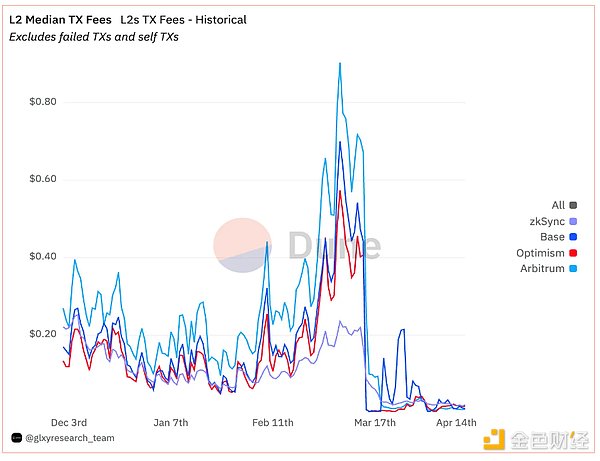
Most of our discussion today can be summarized by this chart, which shows the average transaction fees incurred before and after the implementation of Dencun.
It is obvious from the chart that, starting from March 13, the average transaction cost of Layer 2 such as Arbitrum, Optimism or ZkSync plummeted instantly, from a value of about $0.50 to a value close to 0.
Surprisingly, despite some high-profile peak transaction cost moments on the Base blockchain, all other major Layer 2s have managed to remain stable, with transaction costs close to 0 and without suffering from the block congestion typical of blockchains such as Solana.
3. Active users on the blockchain
The reduction in transaction costs has opened the door for all kinds of investors, even smaller investors, to enter the industry. This has triggered a wave of activity on all major Layer 2s, generating a real boom in operations.
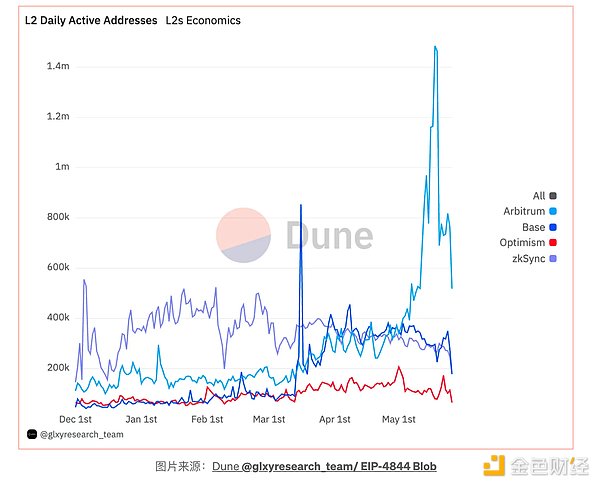
Another indicator confirming that the main Layer 2 activity is more intense is undoubtedly the number of transactions verified on the blockchain. It can be clearly seen from the above figure that, except for zkSync, the number of transactions of other Layer 2s has increased significantly, resulting in a significant outbreak of transaction volume, especially Base in early April and Arbitrum in late May.
4. Average Number of Blobs per Block
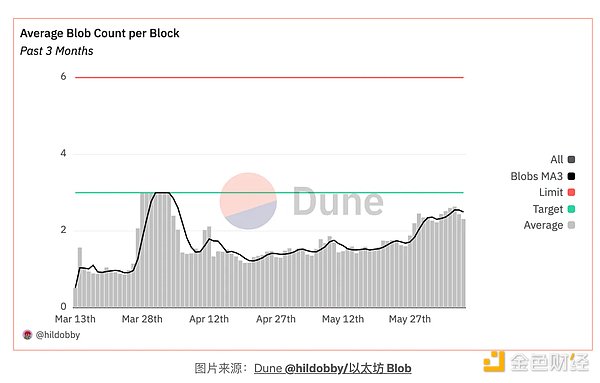
This chart details the operational status of the blockchain network, highlighting the number of "blobs" contained in each Ethereum block. The target and limit lines represent the ideal and maximum values supported by the network itself. These parameters are critical to optimizing the overall efficiency of the blockchain and avoiding excessive overhead. Actively monitoring the number of "blobs" per block is essential to ensure that the network can effectively handle the transaction load while maintaining its stability and performance. Therefore, this data is crucial to giving operators an understanding of the health of the network.
Conclusion
There is no doubt that this update has significantly reduced transaction costs and it has maintained its effectiveness despite the increase in transaction volume on the main Layer 2.
As Vitalik Buterin highlights in his article “Layer 2s as cultural extensions of Ethereum”, Layer 2 has become an essential component of the blockchain ecosystem and will continue to grow in importance. This is due to its widespread integration in the infrastructure, making its use increasingly necessary for the Ethereum ecosystem.
I would like to end with a passage from the article, in which Vitalik answers the question of how such a culture centered around Layer 2 development can succeed. His answer is, in my opinion, extremely compelling and reflects the true and fundamental spirit that guides the community of developers and DeFi enthusiasts.
“The core value proposition of this Layer 2-centric culture is that it attempts to balance the benefits of diversity and collaboration by creating a series of different subcultures that still share some common values and work together on key common infrastructure to achieve those values.”
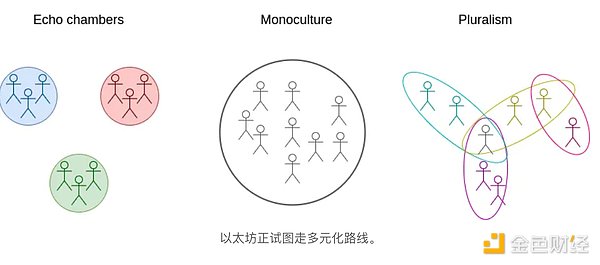
 Weatherly
Weatherly








